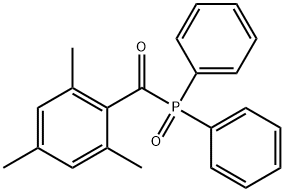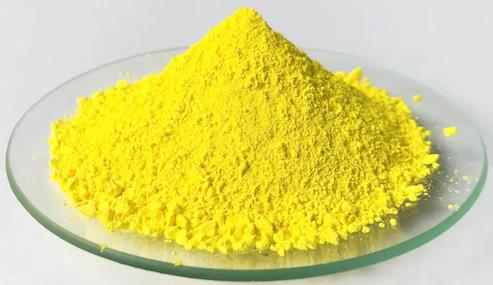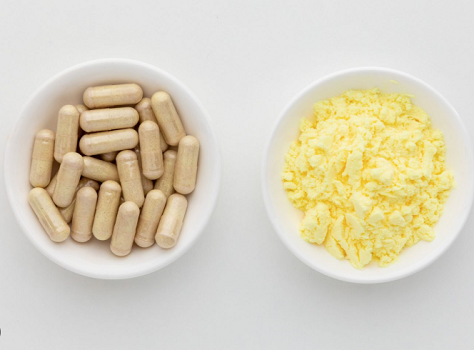A photoinitiator--Diphenyl(2,4,6-trimethylbenzoyl)phosphine oxide
Introduction
The absorption wavelength of an acylphosphine oxide photoinitiator is generally longer than that of other photoinitiators. For example, the maximum absorption wavelength of Diphenyl(2,4,6-trimethylbenzoyl)phosphine oxide (TPO) is around 368 nm. The maximum absorption wavelength of phenylbis (2,4,6-trimethylbenzoyl) phosphine oxide (Irgacure 819) is around 405 nm, and both initiation efficiencies are high. TPO is used in limited concentration for nail modelling products. This ingredient is not regulated under Cosmetic Regulation n. 1223/2009.
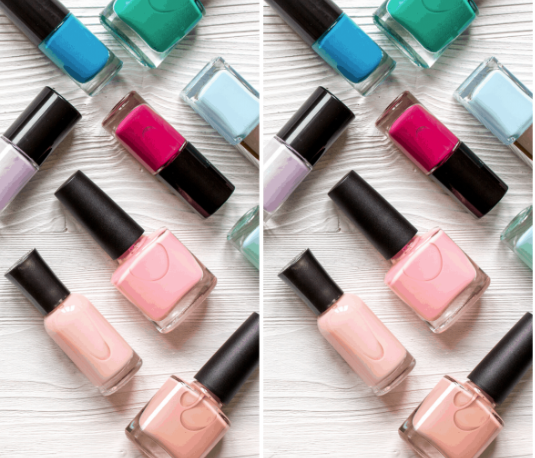
The water solubility of this compound is 3.3 mg/L at 20 °C and 11.9 mg/L at 20 °C. It is readily soluble in dichloromethane, acetone, and n-butylacetate and in styrene and other monomers.
Uses
The chemical has been reported to be used in nail polish and enamel products. The chemical is used as a chemical photoinitiator for polymerisation in artificial nail systems at concentrations between 0.5–5 %. The chemical is listed in the Compilation of Ingredients Used in Cosmetics in the United States, indicating its use in three cosmetic products. The chemical has been reported to have domestic uses in printing inks, paints, coatings, lacquers, and varnishes; adhesives and sealants; fillers, putties, and plasters.
For nail polishes
Diphenyl(2,4,6-trimethylbenzoyl)phosphine oxide is a crucial processing aid as a chemical photoinitiator for polymerisation in artificial nail systems, primarily in UV-curable one-component gel systems. TPO is a Norrish Type 1 or alpha-cleavage photoinitiator. This means that TPO splits into two free radical fragments, which become incorporated into the polymer as the chain ends. Therefore, TPO will be consumed rapidly during the polymerisation process. Even in the unlikely event that minor residual amounts remain, they will be trapped in the rapidly hardened polymer matrix of the formed nail coating. The current and anticipated use concentrations in the gels range between 0.5% - 5.0%. In principle, two major artificial nail systems are used for fingernails and toenails.
One use is for nail polishes (base, middle and top coats). For polish usage, the nails are cleaned thoroughly, and the surface is processed to be sufficiently prepared for applying the gel. A brush is wetted, dipped into the gel with the initiator and then applied to the centre of the nail plate and shaped. The polymerisation is completed in about 2 – 3 minutes. This procedure can be repeated up to 2 – 3 times. After each application, the nails are cured under a UV lamp. Contact is to the keratin of the nail plate. Careful application to the nail plate should not allow contact with the skin. However, without due care, there could be accidental skin contact at the cuticle and the side of the nails. Frequency of use is one complete application every 2-3 weeks. The old gel is removed, and the nail is cleaned before the new application. The other use is for nail enhancement products. The artificial nail systems are applied to the nail plate every 2 – 3 weeks, with a refill application after 1 - 2 weeks. The full application is between 2 – 4 g of gel and 1 g of gel for the refill, corresponding to a maximum of 200 mg TPO in total for all nail plates.
You may like
Related articles And Qustion
See also
Lastest Price from Diphenyl(2,4,6-trimethylbenzoyl)phosphine oxide manufacturers
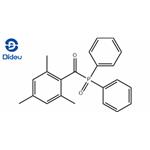
US $0.00-0.00/KG2025-12-02
- CAS:
- 75980-60-8
- Min. Order:
- 1KG
- Purity:
- 98
- Supply Ability:
- 10000KGS

US $1.10/g2025-09-15
- CAS:
- 75980-60-8
- Min. Order:
- 1g
- Purity:
- 99.9%
- Supply Ability:
- 100 Tons Min
